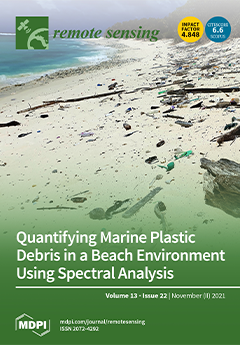Large amounts of aerosols remain in the residual layer (RL) after sunset, which may be the source of the next day’s pollutants. However, the characteristics of the nocturnal residual layer height (RLH) and its effect on urban environment pollution are unknown. In this
[...] Read more.
Large amounts of aerosols remain in the residual layer (RL) after sunset, which may be the source of the next day’s pollutants. However, the characteristics of the nocturnal residual layer height (RLH) and its effect on urban environment pollution are unknown. In this study, the characteristics of the RLH and its effect on fine particles with diameters <2.5 μm (PM
2.5) were investigated using lidar data from January 2017 to December 2019. The results show that the RLH is highest in summer (1.55 ± 0.55 km), followed by spring (1.40 ± 0.58 km) and autumn (1.26 ± 0.47 km), and is lowest in winter (1.11 ± 0.44 km). The effect of surface meteorological factors on the RLH were also studied. The correlation coefficients (R) between the RLH and the temperature, relative humidity, wind speed, and pressure were 0.38, −0.18, 0.15, and −0.36, respectively. The results indicate that the surface meteorological parameters exhibit a slight correlation with the RLH, but the high relative humidity was accompanied by a low RLH and high PM
2.5 concentrations. Finally, the influence of the RLH on PM
2.5 was discussed under different aerosol-loading periods. The aerosol optical depth (AOD) was employed to represent the total amount of pollutants. The results show that the RLH has an effect on PM
2.5 when the AOD is small but has almost no effect on PM
2.5 when the AOD is high. In addition, the R between the nighttime mean RLH and the following daytime PM
2.5 at low AOD is −0.49, suggesting that the RLH may affect the following daytime surface PM
2.5. The results of this study have a guiding significance for understanding the interaction between aerosols and the boundary layer.
Full article





